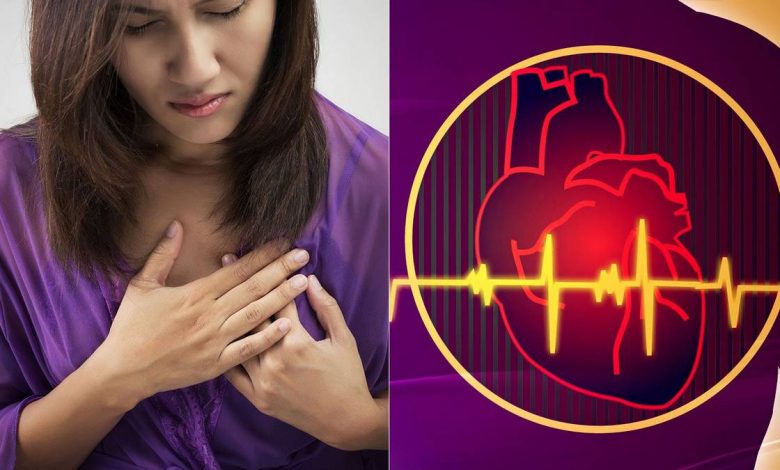Spasmodic pulse: what is this, causes, symptoms, diagnostics, treatment, prevention

Pulse – bounding; Bounding pulse
What is an intermittent pulse?
A fluctuating heart rate is a disease., characterized by strong, intense heartbeat. It is often used to describe the sensation of being accelerated, powerful or strong pulse, felt in the stomach, wrists or neck. People may notice this type of pulse when taking a pulse or when a healthcare professional takes a pulse.. Spasmodic pulse can be as regular, as well as irregular, depending on the underlying cause. Many people with irregular pulses are otherwise healthy and have no other symptoms.. However, a racing pulse can sometimes be a sign of an underlying disease..
Causes of a spasmodic pulse
Jump pulses can be caused by various factors. In some cases, the cause is unknown and classified as idiopathic. However, a strong pulse can also be caused by certain medical conditions and medications..
Common causes of a limiting pulse may include:
- Exercise: during physical activity, the heart rate increases in response to the body's increased need for oxygen and nutrients. This increase in heart rate can lead to an increased heart rate.
- Anxiety: Anxiety and stress can lead to, that the heart will beat faster and stronger, which will increase the heart rate.
- Anemia: Anemia is a condition, in which there are no red blood cells in the body, that carry oxygen to body tissues. This can lead to an increase in heart rate and heart rate fluctuations..
- Hyperthyroidism: Hyperthyroidism is a condition, in which the thyroid gland produces too many hormones, causing an increase in heart rate and heart rate.
- Pregnancy: Pregnant women often experience heart rate spikes due to the increased demands on their circulatory system during pregnancy..
Jumping pulse symptoms
The main symptom of a spasmodic pulse is a strong accelerated heartbeat.. This sensation can be felt on the wrists, abdomen or neck depending on the cause. Other symptoms, associated with limiting pulse, may include:
- Heartbeat
- Chest pain
- Breathlessness
- Sweating
- Fatigue
- Dizziness
- Anxiety
- Dizziness
When to contact a healthcare professional
If a person experiences a racing pulse along with any of the above symptoms, should contact a healthcare professional for assessment. A fast pulse may be a sign of an underlying heart or respiratory condition.. If these conditions are not treated, they can be potentially life-threatening.
Diagnosis of spasmodic pulse
If a person's heart rate increases, the health worker will first take a detailed medical history and conduct a physical examination. Based on the results of the exam and medical history, a healthcare professional may recommend certain tests to determine the underlying cause.
Tests may include a blood test to check for anemia and thyroid function, electrocardiogram (ECG) to check for arrhythmias, echocardiogram for heart examination and blood pressure test.
Spasmodic pulse treatment
Treatment for spasmodic pulse will vary depending on the underlying cause..
If the patient is diagnosed with anemia, a healthcare professional may prescribe iron supplements or medications, helping to increase the number of red blood cells.
If the patient is diagnosed with hyperthyroidism, he may be given medication to control his thyroid hormone levels.
If the fluctuating pulse is the result of cardiac arrhythmias or other heart problems, the patient may need a regular dose of medication or a procedure, such as ablation or implantation of a pacemaker.
In the event of a heart attack or other life-threatening conditions, hospitalization and immediate medical attention are required.
Spasmodic pulse home treatment
If the underlying cause of the fluctuating pulse is not medically serious, there are several home treatments, which can help relieve symptoms. It is important to discuss any home treatments with a healthcare professional, before taking them, to ensure safety. Some home treatments, which may be effective in relieving symptoms, include:
- Avoid Triggers, such as alcohol, caffeine, nicotine and illicit drugs.
- Eating a healthy balanced diet
- Sufficient rest
- Application of relaxation techniques, such as deep breathing and meditation.
- Regular exercise
Prevention of spasmodic pulse
The best way to prevent an increased heart rate is to lead a healthy lifestyle..
This includes healthy eating., regular exercise, rejection of such triggers, like alcohol, caffeine and nicotine, and sufficient rest.
It is also important to control any comorbidities, such as high blood pressure, diabetes and heart disease.
Regular checkup and screening visits with a healthcare professional can help detect any potential problems early.
Quitting smoking and quitting illicit drugs are also important to prevent spikes in your heart rate..
Used sources and literature
Fang JC, O'Gara PT. The history and physical examination: an evidence-based approach. In: Zipes DP, Libby P, Bonow RO, Mann DL, Tomaselli GF, Braunwald E, eds. Braunwald’s Heart Disease: A Textbook of Cardiovascular Medicine. 11th ed. Philadelphia, PA: Elsevier; 2019:chap 10.
McGrath JL, Bachmann DJ. Vital signs measurement. In: Roberts JR, Custalow CB, Thomsen TW, eds. Roberts and Hedges’ Clinical Procedures in Emergency Medicine and Acute Care. 7th ed. Philadelphia, PA: Elsevier; 2019:chap 1.
Mills NL, Yep AG, Robson J. The cardiovascular system. In: Innes JA, Dover AR, Fairhurst K, eds. Macleod’s Clinical Examination. 14th ed. Philadelphia, PA: Elsevier; 2018:chap 4.
